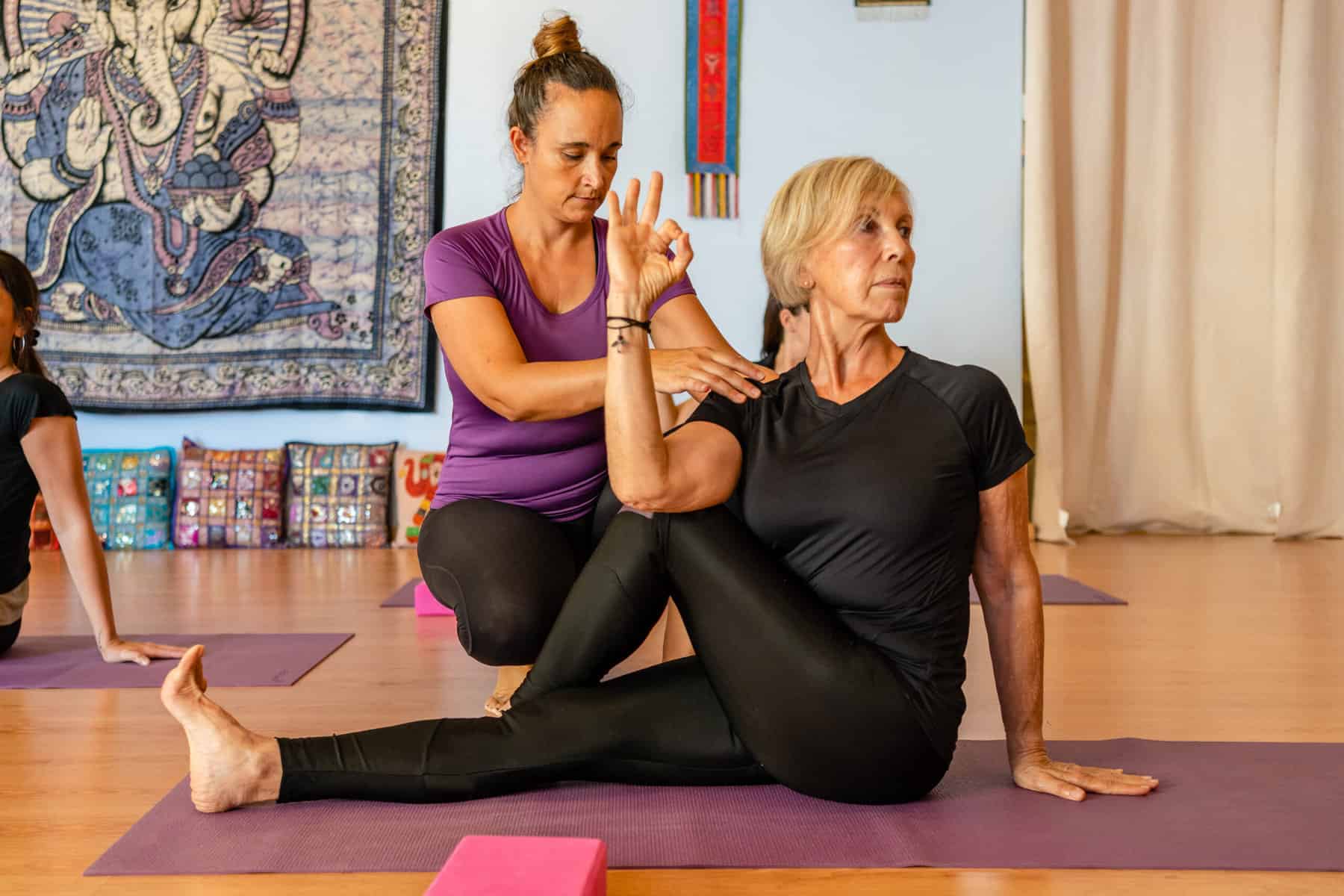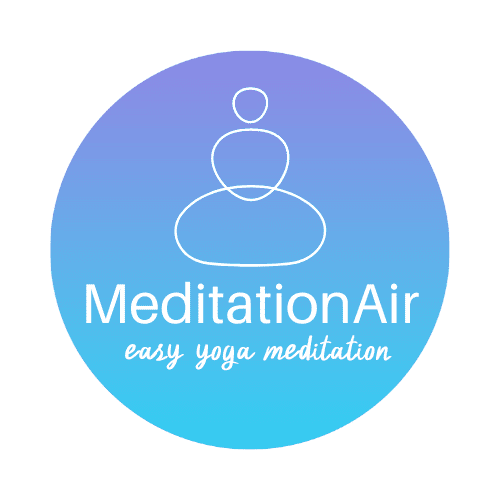How does yoga increase self-awareness?
By practicing all forms of yoga (physical yoga, meditation, and the teachings of yoga philosophy) you build awareness of your body, mind, and spirit – and how those all work together.
Yoga in all its forms (physical, meditation, and philosophical), is one of the best ways to build self-awareness. Experienced yogis know it’s the best way.
That’s because yoga is holistic. Through practice, we seek to train the body, mind, and spirit. And a heightened sense of self-awareness is the happy result of all of this work.
Why Self-Awareness Matters
By self-awareness, I mean the conscious knowledge and understanding of your own character, feelings, desires, thoughts, behaviors, and physical body.
People with high levels of self-awareness tend to be more successful in life. Studies show that self-awareness is linked to higher emotional intelligence, improved ability to communicate, and better decision-making skills.
When you’re self-aware, you recognize your own strengths and weaknesses, and you can consciously decide to work toward improvement and/or self-acceptance. In this state, you’ll achieve greater success in school, work, and personal relationships – and on the mat, of course.
On the other hand, people with low levels of self-awareness struggle to understand their own emotions and behaviors. This can lead to impulsiveness, poor decision-making, difficulty communicating with others, and problems connecting emotionally to others. You can only imagine the challenges these people run into in all areas of life. Clearly, they need yoga!
How Yoga Increases Self-Awareness of the Body
1. Increased Physical Awareness
As you move through different asanas (postures), you become more attuned to the sensations in your body. A good yoga teacher also promotes this awareness with prompts like “feel the stretch in your side body,” or “don’t hold your breath!,” or “feel your spine growing longer.” Teachers will ask you to check in with your body, and readjust or come out of the asana if there is any discomfort.
This encourages you to recognize tension, discomfort, and imbalances. It also helps you notice the gradual loosening of the muscles and softening of the joints as you move through a practice.
Over time, this mindfulness helps you build self-awareness about your body. Outside of yoga classes too, you’ll start tuning in to how your body feels in everyday situations and responding to it, like auto-adjusting your posture, stretching out tension in your back from sitting, or breathing deeply when you feel stress or discomfort.

2. Strengthened Mind-Body Connection
Physical yoga is as much about mind control as it is about body control. Think about how hard you have to concentrate to hold Tree Pose (Vriksasana) or Warrior III (Virabhadrasana III)!
Beyond focusing the mind in balance poses, yoga employs your mind to accomplish all kinds of movements in yoga. For instance, breathing into a certain part of your body can release tension there and allow you to deepen a stretch. Visualizing yourself performing a specific movement in an asana can make it easier to perform the actual action. (It’s called neural priming, and it’s totally fascinating!)
Practicing yoga regularly enables you to better tap into this mind-body connection and use it to your advantage.
3. Body Awareness and Control through Breathing
Pranayama (breathing techniques) are an integral part of yoga and strengthen the bond between mind and body.
By focusing on the breath, you become super aware of the sensations and rhythms of your body. It helps you find balance and be more in tune with what’s happening inside, revealing where you might be holding tension, for instance.
By controlling the breath in physical yoga, you can achieve more in your asana practice. By controlling it during meditation, you can reduce stress and invite calm into your body and thoughts.
Source: Akshaya Agnes
How Yoga Increases Self-Awareness of Emotions
4. Enhanced Interoception
Interoception is the sense of the internal state of the body. Regular yoga practice can heighten your sensitivity to internal non-physical sensations. You’ll become better at recognizing emotions, stress levels, and even intuitive feelings.
Also, because yoga practice encourages moments of stillness – in meditation and in holding postures – you often confront feelings, thoughts, or memories that you might typically overlook in the hustle of daily life.
5. Emotional Release
Certain asanas and yoga sequences can lead to the release of stored emotions. I’ve been in some amazing Vinyasa Flow classes where half of us were either laughing or crying.
That’s because emotions are often manifested physically. When you’re sad, for instance, your head hangs, your back slumps. But when you change this posture of the body in yoga, it can release suppressed feelings, sometimes to your great surprise.
With it, though, comes an opportunity for acknowledgment and understanding of those emotions, key elements of self-awareness.
6. Community and Shared Experience
One of the great benefits of yoga is its ability to spark growth individually and on a community level at the same time.
If you’re into it, group classes are a great way to connect with other yogis. Sometimes those chats go deep, leaving you with reflections that enhance your personal awareness.
7. Mindfulness and Presence
Many yoga practices emphasize staying present. Whether holding an asana or sitting in meditation, being fully in the moment pulls your attention away from distractions and past or future thoughts.
You’re empowered to focus on current experiences, feelings, and bodily sensations. This heightened attention to what’s happening “now” allows you to recognize your reactions, emotions, and triggers more clearly.
Over time, this continuous reflection and present-moment awareness deepen your understanding of yourself, fostering greater self-awareness.
How Yoga Increases Self-Awareness of Spirituality
8. Meditating and Reflecting
Dhyana, or true meditation, encourages introspection whose ultimate goal is spiritual enlightenment. In proper Dhyana practice, you train yourself to observe thoughts without attachment in order to gain insights into your patterns of thinking, emotional reactions, and deep-seated beliefs.
Yoga meditation often involves observing one’s thoughts as they arise and recede. Over time, this can lead to recognition of recurring thought patterns, beliefs, and internal narratives that shape one’s behavior and self-perception.
9. Exploration of the Subtle Body
In yoga philosophy, the subtle body refers to the non-physical parts of an individual that exist alongside the physical body. It includes energy centers (chakras) and channels (nadis), among other things.
Numerous yoga practices, like Kundalini, aim to balance, clear, and strengthen these energy systems to promote health, self-awareness, and spiritual growth.
10. Yoga Philosophy and Self-Inquiry
The philosophical teachings of yoga, from texts like the Upanishads, Patanjali’s Yoga Sutras and the Bhagavad Gita, encourage self-inquiry.
By studying these texts and following the practices laid out in them, you will delve deep into the realm of self-awareness, asking questions like:
- who am I truly beyond my name, role, and physical body?
- what is my life purpose?
- how do I conduct myself in the world?
- what are my desires, attachments, and aversions?
In essence, the multifaceted practice of yoga, with its physical postures, breathwork, meditation, and spiritual inquiry, provides many ways for you to explore, understand, and connect with yourself on deeper levels. Yoga is, quite simply, the path to self-awareness.


